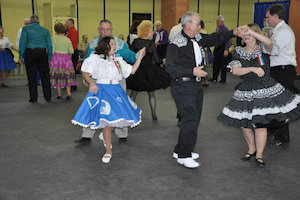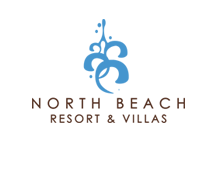
Get your dancing shoes!
The 40th annual South Carolina Square and Round Dance Convention is coming to the Springmaid Beach Resort and Convention Center in Myrtle Beach January 23-24.
Tickets are $25 in advance or $30 at the door to attend the whole event, or $15 for Friday only, $20 for Saturday only. Dancers younger than 16 get in free with a paid adult.
On Friday from 2 to 4 p.m., several activities will take place concurrently, including a round dance party, the “Callerama,” an Introduction to Line Dancing class for those who want to learn the fun ins and outs of line dancing, and a contra dance party. Then, Friday's sock-hop dance will take place from 8 to 11 p.m.
On Saturday, the day will be filled with workshops, dancing and other activities and events. Round dance workshops will be from 10 a.m. to noon for both phase 2-3 and phase 4 dancers. A high-energy workshop will also be from 10 a.m. to noon. An Introduction to Rounds class will take place at 2 p.m., and another round dance workshop (phase 5) is set for 3 to 4 p.m.. The square dance workshop is from 2 to 4 p.m.
Saturday's evening dance is from 7:30 to 11 p.m. Proper dance attire is requested for the both the Friday night and Saturday night dances.
In addition to the many styles of dance being highlighted — contra, round, square, line, high-energy — the convention will also include a fashion show, sewing clinic, and the ever-popular Parade of Clubs.
Still think square dancing sounds … well, square? Think again, this is actually an historic form of folk dance that took root in the U.S. when immigrants from Western Europe settled in America. Each family brought with them the customs and heritage of their home countries, including their folk dances. When these diverse families gathered in their new communities, they shared their music and dance in local homes, barns, town halls and city squares. Eventually, French quadrilles, Irish jigs, and English reels were interwoven and the square dance was born, according to dance historians.
Square dancing became even more characteristically American with the introduction of the “caller,” according to the Western Square Dancing association. The caller stands before the dancers and calls out, or cues, their dance steps. As the square dance evolved and its number of steps increased, the caller became more and more necessary.
Square dancing is most often done by couples in groups of two or four, but can include more dancers, according to the association. Dances begin and end with each set of couples returning to a square formation. Round dancing, by contrast, can refer to cued ballroom dances or to circular chain dances where dancers connect in various ways, such as hand-in-hand or hand-to-shoulder.
The popularity of square and round dancing has waxed and waned through the years, but through it all, the dances have adapted with the times and remained popular among certain groups. During the early 1930s, entrepreneur and automobile pioneer Henry Ford helped jump-start square dance popularity as part of his New England restoration project, says the Western Square Dancing association.
Electric microphones added to the popularity and accessibility of the dances as they allowed a single caller to be heard by large crowds. Records eliminated the need for live music, making the dances even more accessible.
Square dancing was designated the official folk dance of South Carolina in 1994.
For tickets and other information about the state convention, contact Richard and Barbara Walker, 803-788-0118, sewinbee@juno.com. For venue information, contact Springmaid Beach Resort and Convention Center, 3200 S. Ocean Blvd., Myrtle Beach, SC, 866-764-8501.
(Posted: 12/29/14)
(Photo Courtesy: myrtlebeachonline.com)

